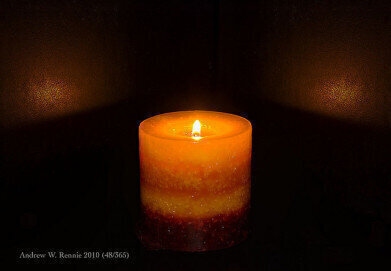GC-MS
What Will Chromatography Make of Scented Candles?
Jan 21 2016
Smells surround us, and their impact on us — both knowingly and unconsciously — mean that odours affect our every moment. Research has shown that smell is linked with memory — possibly more so than any other of our senses — and emotion.
We are constantly bombarded by natural and artificial smells as shops try and encourage to buy fresh bread or coffee — so is it any surprise that that we try and make our homes smell fresh and inviting?
But what is it in that our olfactory nerves detect in those household fragrance products? A team has used chromatography to try and find the answer to the question — what makes the scent in a scented candle?
It’s a smelly market
The scented ‘aircare’ products market in the UK is worth an estimated £430 million per year — and is growing every year with the sales of scented candles increasing by over 20% in the year to March 2015. It is not just volumes that are driving the sale’s increases, consumers want to buy premium scented products and are willing to pay more for candles than we used to.
But what is it that we are buying? There is not much information about the contents or — perhaps more importantly — what they emit when we use them. A team from the Fraunhofer Wilhelm-Klauditz-Institut in Germany set out to try and find out the answer to what emissions — OVOCs — we might be breathing in.
Chromatography gets to the bottom of the smell
The work — ‘Analysis of odour compounds from scented consumer products using gas chromatography-mass spectrometry and gas chromatography-olfactometry’ — reported in Analytica Chimica Acta aimed to investigate the odorous volatile organic compounds (OVOCs) in household products that contained a fragrance. The team were particularly interested in determining whether any of the 26 EU-regulated fragrance allergens could be detected — as their use is restricted in other types of products.
The team placed the samples in a desiccator at typical indoor room conditions. The OVOCs were collected on sorbent tubes in the desiccator followed by thermal desorption (TD) for GC analysis. The samples were analysed by both gas chromatography – mass spectrometry (GC-MS) and gas chromatography-olfactometry (GC-O) using a trained analyst’s nose.
Although GC-MS is a very sensitive technique the human nose is even better, hence, the use of GC-O. GC-O is often used in detecting VOCs which are emitted at very low levels. Different VOC sample preparation methods are discussed in the article, Trace Level VOC Analysis in Different Sample Matrices on Chromatography Today site.
What a smelly lot
Over 300 fragrant compounds were identified at a concentration above 1µg/m3, with an average of 34 odorous compounds per product. 18 different fragrance allergens were detected in the 51 products —all products releasing at least one allergen, usually at trace levels.
The human nose is the best detector of fragrance compounds, .and the team recommend a combination of GC-MS and GC-O to identify fragrance compounds in future work.
What’s your favourite smell?
Image via Flickr
Digital Edition
Chromatography Today - Buyers' Guide 2022
October 2023
In This Edition Modern & Practical Applications - Accelerating ADC Development with Mass Spectrometry - Implementing High-Resolution Ion Mobility into Peptide Mapping Workflows Chromatogr...
View all digital editions
Events
ACS National Meeting - Fall 2024
Aug 18 2024 Denver, CO, USA
Sep 04 2024 Chiba, Tokyo, Japan
Sep 04 2024 University of Warwick, Coventry, UK
Sep 10 2024 Rockville, MD, USA
Plastics Recycling World Expo Europe
Sep 11 2024 Brussels, Belgium














